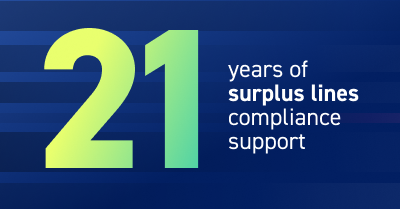It seems like Generative AI emerged from nowhere in November 2022 with the introduction of ChatGPT from OpenAI. It certainly has made artificial intelligence much more visible in the public eye, resulting in its great democratization. However, the big data revolution of the last decade-plus is really the basis for this new era, and this is especially true for generative AI in the insurance industry.
AI vs. Generative AI
The convergence of several factors has accelerated development in the AI space – these include massive increases in computing power, the prominence of cloud computing, the broad availability of open-source code, and major advances in computer science. Chief among key developments is the emergence of transformers – sets of deep learning neural networks that drive the creation of foundation models, which can be adapted and used for many types of use cases. These foundation models, trained on enormous sets of unlabeled data, can then be used for a wide variety of applications such as data extraction, object recognition, sentiment analysis, and question answering, resulting in the generation of content in many formats. Large language models are a subset of foundation models focused on text. GenAI leverages and works in concert with many other technologies in the AI family.
To help others wrap their minds around the capabilities of GenAI, the experts at ReSource Pro created this definition:
The key distinction between Generative AI and other AI technologies is that GenAI creates content resembling human-generated content, going a step beyond other AI technologies that identify, extract, organize, and analyze data, as well as execute tasks and create predictions. GenAI leverages vast stores of training data to learn patterns and then create text, images, videos, computer code, database queries, or other forms of content.
Use Cases for Generative AI
In addition, our newly released research report, “Generative AI in P&C Insurance: Promise and Perils for Personal and Commercial Lines,” covers the state of maturity of GenAI in P&C insurance. The report addresses how carriers are approaching the technology, potential use cases and benefits, and concerns the use of AI in business.
Ultimately, GenAI has acted as a catalyst for the use of AI in the world and in business. By democratizing AI and providing broad access to new tools, GenAI has helped many people and organizations better understand the power of AI and explore its potential for their industry.
Now, when senior executives (and others) ask about GenAI, they are often asking about AI in general. The challenges are less about technology and more about the implications and proper use of the tech. There are so many use cases for companies that the focus is more on identifying and prioritizing use cases in the context of business strategy. At the same time, the explosion of GenAI has heightened awareness of the need for AI governance, especially due to the regulatory, legal, and societal issues surrounding the technology.
Does the rapid emergence of GenAI signal that the singularity will occur sooner than we think – where machine intelligence surpasses human intelligence? Or does it point to a bright future for the human race? The answer probably lies somewhere in between.
Download our new research report here for a detailed look at the current state of generative AI for personal and commercial lines insurers.
Or, check out our Consulting offerings to learn more about how our insights, research, and insurance expertise can benefit your organization.




